Wildflowers
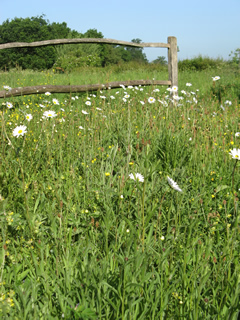 |
|---|
The 100 square metre wildflower area used to be a low-mowed area of the meadow which took up a good deal of time and fuel to mow and keep as a lawn. In 2003 the process of converting it to a dedicated wildflower area began with close mowing and raking (see below) and the sowing of Yellow Rattle seed, a "semi-parasitic herbaceous annual plant " that gains some of its nutrients from the roots of neighbouring plants which in this case was various meadow grasses.
"Research at the UK's Centre for Ecology and Hydrology has shown that encouraging Yellow Rattle to grow in hay meadows greatly increases biodiversity by restricting grass growth and thereby allowing other species to thrive."
The first sowing was successful with the Rattle getting well established. In Year two additional Yellow Rattle seed and wildflower mixed seed were sown to supplement the natural dropping of seed. By year three the grass had diminished and a variety of indigenous and sown wildflowers had taken root.
Now in its 7th year the wildflower lot features Alconet, Betony, Birds Foot Trefoil, Meadow Buttercup, Celandine, Clover (red), Cowslip, Daisy, Dandelion, Dock, Dog Violet, Goldilocks Buttercup, Hawkweed, Knapweed, Lady's Bedstraw, Meadow Cranesbill, Mouse Ear, Nipplewort, Oxeye Daisies, Plantain (Greater and Ribwort), Ragwort, Selfheal, Scarlet Pimpernel, Sorrell, Speedwell, Stitchwort, Tare (Smooth), Vetch (Tufted), Wood Spurge, Yarrow (Millefeuille) Yellow (Meadow Vetchling, Woundwort and (yes!) Yellow Rattle.
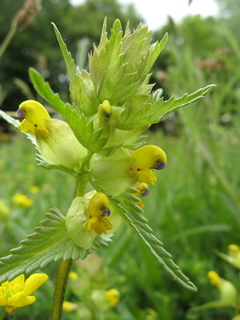 |
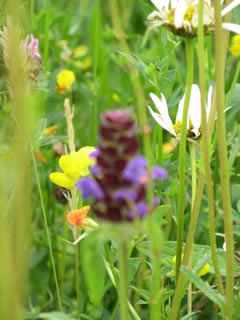 |
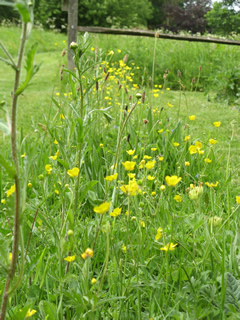 |
|---|
Wildflower Lot Maintenance
|
|
Winter
|
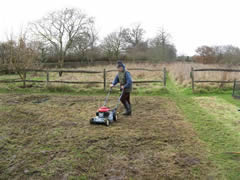
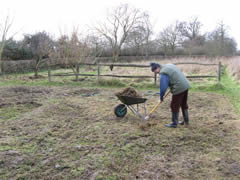
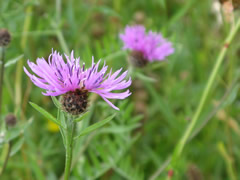
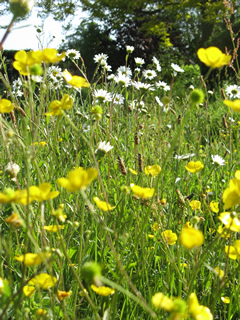
|
SpringI do absolutely nothing except enjoy and record the resulting flowers, grasses and insects |
|
SummerI do absolutely nothing except enjoy and record the resulting flowers, grasses and insects |
|
AutumnI hand pull any thistles that have flowered before the seeds blow all over the neighbourhood. |
|
That is it! A year in the life of the wildflower lot. |
|
